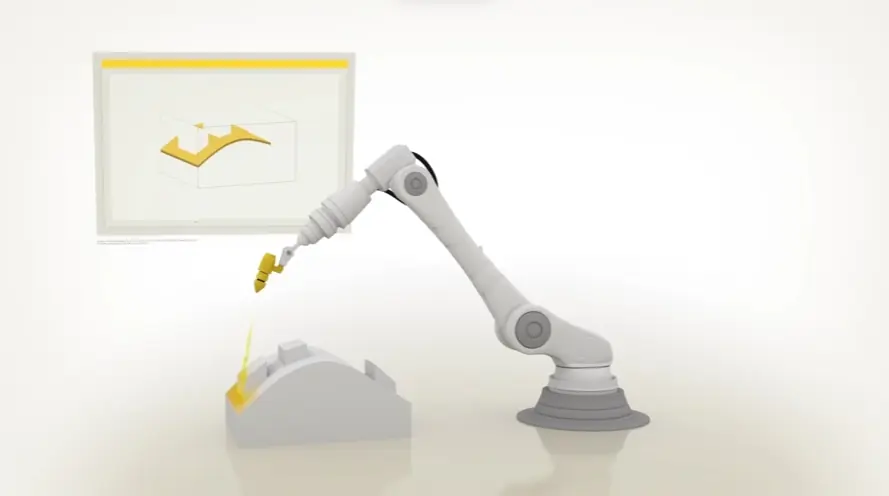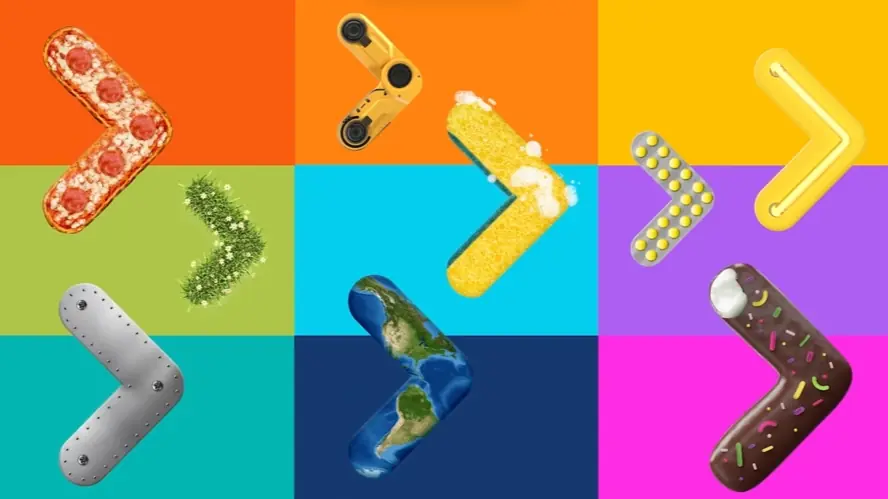1. Nalco Water

Duration : 1 minute and 29 seconds
SCHUNK's gripping power is dramatically showcased. This 3D Animated Marketing Explainer uses clean visuals to highlight the software update's impact on the gripper's performance. Automation engineers and manufacturing professionals will appreciate the concise demonstration.
The visual comparison of BasicGrip and StrongGrip, along with the added weight demonstration, clearly illustrates the enhanced capabilities. The video's under 20-second length and use of text labels ensures key information is easily absorbed.
2. Thermo Fisher 3D Marketing Video Examples

Duration : 3 minutes and 17 seconds
High-impact visuals make this 3D Business Content Marketing Video a standout. The animation style is both engaging and informative, making complex ideas easy to understand. The video's concise nature keeps viewers captivated.
The focus on improved customer service and operational efficiency is spot-on. A clear call to action leaves viewers wanting to learn more. The overall effect is a persuasive argument for using the service.
Smooth transitions keep viewers hooked, making your product's value easy to grasp.

Duration : 2 minutes and 14 seconds
Pinkerton's video grabs attention immediately by visualizing data deluge through dynamic 3D Animation Marketing Video. Opening with a flurry of documents transforming into organized insights, it cleverly depicts order emerging from chaos. This unusual approach makes complex information instantly digestible and engaging.
The video innovatively employs visual metaphors; the crime forecasting depicted as a rain cloud is particularly striking, simplifying a difficult concept. Further enhancing comprehension, animated neighborhood scenes with visible crime index scores give tangible context to abstract data. This video excels at clear communication, making data-driven security solutions accessible and inspiring viewers to explore visual storytelling in their own marketing.
Let 3D visuals tell your brand's story, building trust.

Duration : 1 minute and 59 seconds
Energy use in Oregon is vividly portrayed. Isometric perspectives cleverly illustrate daily energy consumption, from homes to businesses, showcasing a Creative 3D Marketing Animation style that's both informative and visually appealing. The video effectively communicates the impact of peak demand and the benefits of shifting energy use.
PGE's commitment to clean energy is subtly conveyed through visuals of renewable sources and Oregon's landscape. The video's pacing is excellent, and the use of visual metaphors like a clock and energy meter enhances understanding. The overall effect is a memorable and impactful message about energy conservation.
5. Festo 3D Product Demo Video

Duration : 1 minute and 14 seconds
This captivating 3D Product Marketing Video showcases Festo's multi-position IO-Link system with stunning clarity. The dark blue backdrop and precise 3D models create a sophisticated atmosphere, while the clear labeling of components ensures easy comprehension. The strategic use of color and lighting enhances the visual appeal, further highlighting the system's sleek design.
The robotic arm demonstration is particularly effective, vividly illustrating the system's ease of use and efficiency. Smooth transitions and dynamic camera angles add to the overall visual appeal, making the complex technical information easily digestible. This video is a prime example of how to effectively communicate complex technical details in a visually engaging manner.
Clear IO-Link explanation; viewers understand the tech advantage.
6. Expleo 3D Visual Storytelling Video

Duration : 2 minutes and 40 seconds
This captivating 3D Digital Marketing Video immediately grabs attention by showcasing ExpleoSMeTa's innovative approach to cybersecurity testing. The video's strength lies in its clear demonstration of the platform's functionality, using realistic 3D models of vehicles and drones to illustrate its real-world applications. This professional video targets businesses in the automotive and mobility industries.
Detailed UI demonstrations of the ExpleoSMeTa briefcase are particularly effective, highlighting its ease of use and comprehensive features. The video successfully conveys the importance of cybersecurity in modern transportation, leaving a lasting impression and encouraging further exploration of this solution.
Craft a compelling narrative. viewers connect with stories, not features.
7. Smith & Nephew 3D Product Showcase

Duration : 1 minute and 3 seconds
Sophisticated visuals immediately engage viewers in this 3D Animation for Marketing Video. Smith & Nephew's surgical instrument is showcased with stunning clarity, the dark background accentuating the instrument's design and the blue contact points. Dynamic camera angles and precise lighting create a compelling product demonstration.
The video's concise design and clear text overlays effectively communicate the key message of improved ergonomics to orthopaedic specialists. This approach, without a voiceover, successfully conveys the message of innovation in a visually stunning and memorable way.
Demonstrate your product's ease of use through intuitive 3D animation, inspiring trial.
8. Syensqo

Duration : 2 minutes and 30 seconds
Hydrogen fuel cell technology takes center stage in this 3D Animated Marketing Showcase. The video's strength lies in its stunning visuals; the seamless blend of nature and technology immediately grabs attention. The hydrogen-powered truck, a key element, showcases the practical application of Synsqo's innovation.
The clean, modern aesthetic enhances the overall impact. Concise text overlays effectively communicate key messages, ensuring the video is both visually appealing and informative. The video's memorable imagery and impactful message leave a lasting impression.
9. Diemme Filtration

Duration : 3 minutes and 39 seconds
Efficiently demonstrating the Diemme Filtration Automat, this video uses 3D Animated Marketing to highlight its automated processes. The clear visuals and concise animations make complex machinery easily understandable, showcasing the sludge inlet, filtrate outlet, and cake blowing system.
Detailed close-ups of key components, such as the hydraulic cylinder and filtering cloth, are impressive. The video's professional aesthetic and smooth transitions make it a compelling resource for industrial professionals seeking efficient filtration solutions.
10. Ophir

Duration : 1 minute and 28 seconds
Powerful visuals instantly captivate in this 3D Marketing Video Example. The futuristic design and seamless camera movements create a highly engaging experience. Ophir's SUPIR lens is presented with exceptional detail, showcasing its sophisticated design.
The video's concise nature, under 30 seconds, effectively highlights key features and specifications. This is a prime example of a technical product video that successfully targets professionals, leaving a lasting impression of the lens's capabilities.
11. Atlas Copco

Duration : 1 minute and 0 seconds
Powerful visuals launch this 3D Animated Marketing Promo. The futuristic control room and transparent blue compressor model immediately captivate, showcasing cutting-edge engineering. The Boost Flow Mode feature is clearly explained, emphasizing its reliability under heavy demand.
This compelling video effectively highlights the GA VSDs compressor's smart functionality and ability to handle demanding situations. The video's dynamic lighting and close-up shots of the compressor's features create a professional and high-impact presentation, making it a great example of product highlight video.
12. CAT 3D Marketing Video

Duration : 1 minute and 43 seconds
Financial planning, simplified! The video's innovative use of data visualization, transforming a US map into a pie chart, immediately captures attention. This 3D Marketing Animation cleverly simplifies complex financial concepts, making them accessible. It's short, impactful, and leaves a lasting impression.
The animated sequences showing solutions and the impact on family, self, and legacy are particularly effective. The use of a vibrant color palette and smooth transitions enhances the visual appeal. The video concludes with a heartwarming touch, encouraging viewers to plan for their golden years with CAT.
13. Arctic Wolf 3D Visual Marketing Video

Duration : 1 minute and 44 seconds
Cybersecurity's visual narrative unfolds with striking impact. This 3D Explainer Marketing Video showcases Arctic Wolf's Incident Response service through a dynamic depiction of a cyberattack and its resolution. The use of vibrant colors and dynamic transitions creates a compelling visual experience.
The clever use of hexagon icons, representing the three-pronged approach, is both memorable and easily understood. The abstract animation of data recovery effectively conveys the complexity of the process and Arctic Wolf's expertise. The video's modern, sleek, futuristic style leaves a lasting impression.
Prioritize simple, memorable visuals to explain complex ideas easily.

Duration : 1 minute and 11 seconds
Intriguing visuals launch this 3D Marketing Animation Showcase. The vibrant color palette and dynamic camera work create a futuristic, engaging experience. Visual storytelling effectively communicates complex blockchain concepts.
Gelato's automation is brilliantly showcased through animated smart contracts and token interactions. The video's clarity and accessibility make it memorable, leaving a lasting impression.
15. GoCardless

Duration : 1 minute and 28 seconds
Streamlining recurring payments? This Animated 3D Marketing Video for GoCardless is a visual masterpiece. The clever use of 3D shapes and the globe graphic effectively communicates the platform's global reach and seamless payment process. The laptop mockup highlights the user-friendly interface, while the partner integration grid showcases its versatility.
The video's concise design and vibrant visuals make complex concepts easily understandable. The diverse representation of businesses, from small to large, broadens its appeal. It's a powerful example of how animation can simplify complex business solutions, leaving a lasting impression.
16. Arrow ECS 3D Animated Marketing Showcase

Duration : 1 minute and 49 seconds
Cloud service delivery is complex. Arrow ECS's 3D Marketing Video, however, masterfully simplifies this, showcasing ArrowSphere's capabilities with stunning visuals. The fast-paced editing and compelling CGI create a memorable experience, highlighting key features like end-to-end lifecycle management and multi-cloud support.
The video's clear presentation of ArrowSphere's benefits, including effortless provisioning and billing, effectively targets IT professionals. The Request a Demo call to action is strategically placed, making it a highly effective marketing tool. This video is a great example of how to use visuals to explain complex technology.
Design your video to evoke positive emotions, making viewers feel good about your product.
17. Boyd 3D Creative Marketing Video

Duration : 1 minute and 3 seconds
Visualize partnership taking form, this Boyd video opens with design blueprints, immediately signalling a structured approach to medical wearables. Its a deep dive into thoughtful engineering, where material innovation meets practical application. A compelling 3D Demonstration for Marketing effectively breaks down intricate device layers, from skin-compatible adhesives to breathable and moisture-managing components.
Beyond just showcasing product attributes, the video illuminates Boyd's role as a strategic ally. Emphasis is placed on their collaborative ethos from initial concept to worldwide distribution. Rapid prototyping and comprehensive engineering paired with their global facilities underscore Boyds position. Readers are inspired to see Boyd not just as a supplier but a resourceful partner, driving advancement and efficiency in medical device technology.
Combine compelling visuals with clear messaging to create a lasting impression and drive conversions.
18. Deloitte

Duration : 1 minute and 46 seconds
Compelling visuals showcase the Alpha Platform's transformative power. This Explainer 3D Marketing Animation uses 3D models to illustrate how the platform helps businesses navigate change, overcoming legacy system challenges. The video targets business leaders, clearly demonstrating the platform's adaptability and modularity.
Deloitte's Alpha Platform is presented as a solution for future success. The video's clever use of visual metaphors, such as the assembling A and combining cubes, effectively communicates the platform's key features. The overall effect is a concise and engaging presentation that leaves a lasting impression.
19. EPSON 3D Product Explainer Video

Duration : 1 minute and 35 seconds
Unleashing a visual spectacle, Epson Home Cinema elevates the standard for home theaters. Move beyond ordinary viewing; this video plunges viewers into a world of vibrant imagery, presenting a projector meticulously crafted for ultimate picture enthusiasts. More than just display prowess, it's about creating a captivating ambiance, transforming living rooms into immersive personal cinemas.
Showcasing precision engineering, the video delves into the intricacies of its laser light source and pixel enhancement, vividly illustrating the difference in visual depth and clarity. The review effectively conveys how this 3D Brand Marketing Video highlights superior color accuracy and exceptional contrast, delivering on its promise of unparalleled home viewing pleasure for both movie nights and intense gaming sessions.
This expertly produced piece emphasizes not only the technological breakthroughs of Epson Home Cinema but also its ability to deliver an emotionally engaging and visually stunning experience, truly perfecting projection for the modern home.
Let your product's beauty speak for itself through breathtaking visuals, driving sales.
20. Invacare

Duration : 1 minute and 6 seconds
Invacare's use of 3D Animation for Marketing is strikingly effective. Athlete silhouettes, representing peak performance, create an immediate connection, while the vibrant color scheme and dynamic camera angles enhance the overall visual appeal. The strategic use of a stadium setting cleverly symbolizes Invacare's achievements.
This concise video successfully communicates Invacare's brand message without being overwhelming. The impactful visuals, combined with a clear message, leave a lasting impression.
21. Greenway 3D Animated Marketing Video

Duration : 1 minute and 37 seconds
Greenway's video immediately grabs attention with its vibrant visuals. The opening scenes of Petra and a wheat field create a powerful sense of aspiration, perfectly complementing the 3D Product Marketing approach. The innovative use of 3D spheres to represent the product's effect on the body is both visually striking and memorable.
The video's success stems from its seamless blend of high-quality animation and clear messaging. Product boxes are showcased elegantly, while abstract backgrounds add a touch of sophistication. This approach effectively communicates the brand's focus on natural ingredients and personalized health solutions. The 96-second runtime is perfectly paced.
Seamlessly weave product details into the narrative, making information memorable and impactful.
22. Inther

Duration : 2 minutes and 17 seconds
Does efficient storage and transport matter to your business? This concise 3D Marketing Campaign Video showcases the Inther A-Frame's modular design. The animation clearly demonstrates how easily the sections connect and disconnect, highlighting its adaptability. Black, gray, and red colors create a professional look.
The video's brevity is a strength, conveying key information€”capacity for 24 modules and 1440 products€”with clear text annotations. Its efficiency makes it ideal for busy professionals in manufacturing and logistics. This is a powerful example of how visual storytelling can effectively communicate complex product features.
23. Applied Medical

Duration : 1 minute and 31 seconds
Precision engineering takes center stage in this 3D Animated Marketing Campaign. The Voient Intelligent Energy System's components are meticulously detailed, showcasing the seamless integration of advanced technology. The video's brevity is a strength, effectively communicating complex information with visual clarity.
Applied Medical's video expertly uses dynamic camera angles and a minimalist aesthetic to highlight the system's sleek design and functionality. Concise text overlays convey key messages without overwhelming the viewer, leaving a lasting impression of innovation and precision.
24. Bosch 3D Tech Explainer Video

Duration : 1 minute and 1 second
This Bosch video's strength lies in its 3D Marketing Explainer approach. The internal workings of the acceleration sensor are vividly brought to life through smooth animations and clever use of color-coding. The clear visualization of the comb structure's movement is particularly effective.
Its success stems from seamlessly blending technical detail with visual appeal. The video cleverly showcases the sensor's application in various consumer electronics, making it relevant beyond automotive engineering. The overall effect is both informative and engaging.
Make the invisible, visible; intrigue viewers and boost engagement.
25. MEDHOST 3D Corporate Explainer Video

Duration : 56 seconds
Engaging from the outset, this MEDHOST video uses 3D Product Marketing Animation to showcase an innovative approach to patient care. The animation seamlessly transitions from a patient with a broken arm to a doctor-patient interaction, illustrating the crucial need for both quality care and meaningful connections. The visual of a blue tube linking hospitals, providers, and patients emphasizes MEDHOSTs ability to facilitate the care cycle using IT solutions.
The narrative progresses, highlighting the ease of managing patient records and using mobile-friendly access, which ultimately leads to improved hospital returns and reduced readmissions. The video culminates with a visual metaphor of a connected cycle, emphasizing MEDHOST's role in bringing together hospitals, clinicians, and patients. This approach underscores how the system improves the overall healthcare experience for everyone.
Create a character viewers connect with to boost emotional engagement.
26. AWS

Duration : 2 minutes and 4 seconds
AWS for Games solutions are brilliantly showcased in this Best 3D Marketing Animation. Miniature game worlds and a developer's workspace effectively illustrate the breadth of services offered. The vibrant color palette and dynamic visuals enhance the overall impact.
Stylized icons and graphics make complex cloud solutions accessible. The rocket launch and spaceship docking are memorable, symbolizing growth and learning. Visit the AWS for Games landing page to learn more.
27. Fujitsu

Duration : 1 minute and 45 seconds
Policy visualization before implementation€”a powerful concept demonstrated in this Explainer 3D Marketing Video. The 3D city model, with its color-coded lines connecting transport, economic, and environmental sectors, is exceptionally clear. This is aimed at government agencies and city planners.
The video's strength lies in its ability to simplify complex data, making it accessible to a broad audience. Visualizing the impact of policy decisions through a dynamic 3D model is highly effective.
28. Enable Creative 3D Business Video

Duration : 1 minute and 30 seconds
Clever visuals propel this 3D Marketing Animation Video for Enable. The animated rocket launch and coin conveyor belt cleverly illustrate the platform's efficiency and growth potential. Data visualization is seamlessly integrated, making complex information easily understood.
The video's vibrant colors and dynamic camera angles create a memorable experience. The clear call to action leaves viewers wanting to learn more, making it a highly effective marketing tool.
Craft a visual journey that makes complex processes feel simple, inspiring viewers to learn more.
29. BITZER 3D Product Visualization

Duration : 1 minute and 52 seconds
BITZER's compelling video showcases the power of its Digital Network. The seamless integration of 3D animation and UI elements makes complex technical information accessible, demonstrating the software's functionality effectively. This 3D Marketing for Brand strategy is a masterclass in visual communication.
The video's focus on key benefits, such as reduced downtime and lower TCO, resonates with refrigeration professionals, building managers, and service technicians. The concise presentation and clear visuals leave a lasting impression, making it a strong promotional tool.
Make your 3D animation short and impactful, ensuring viewers absorb the key message and take action.
30. Streamr

Duration : 1 minute and 33 seconds
Environmental awareness is surging, making this 3D Animated Marketing Video exceptionally relevant. The video's use of bright, interconnected visuals effectively communicates the concept of Earth Tokens and their role in sustainable investment.
The contrasting visuals of deforestation versus preservation powerfully highlight the choice between environmental damage and responsible action. This, combined with clear depictions of the platform, makes the message compelling and easily understood, ultimately driving home the importance of investing in a sustainable future.







































